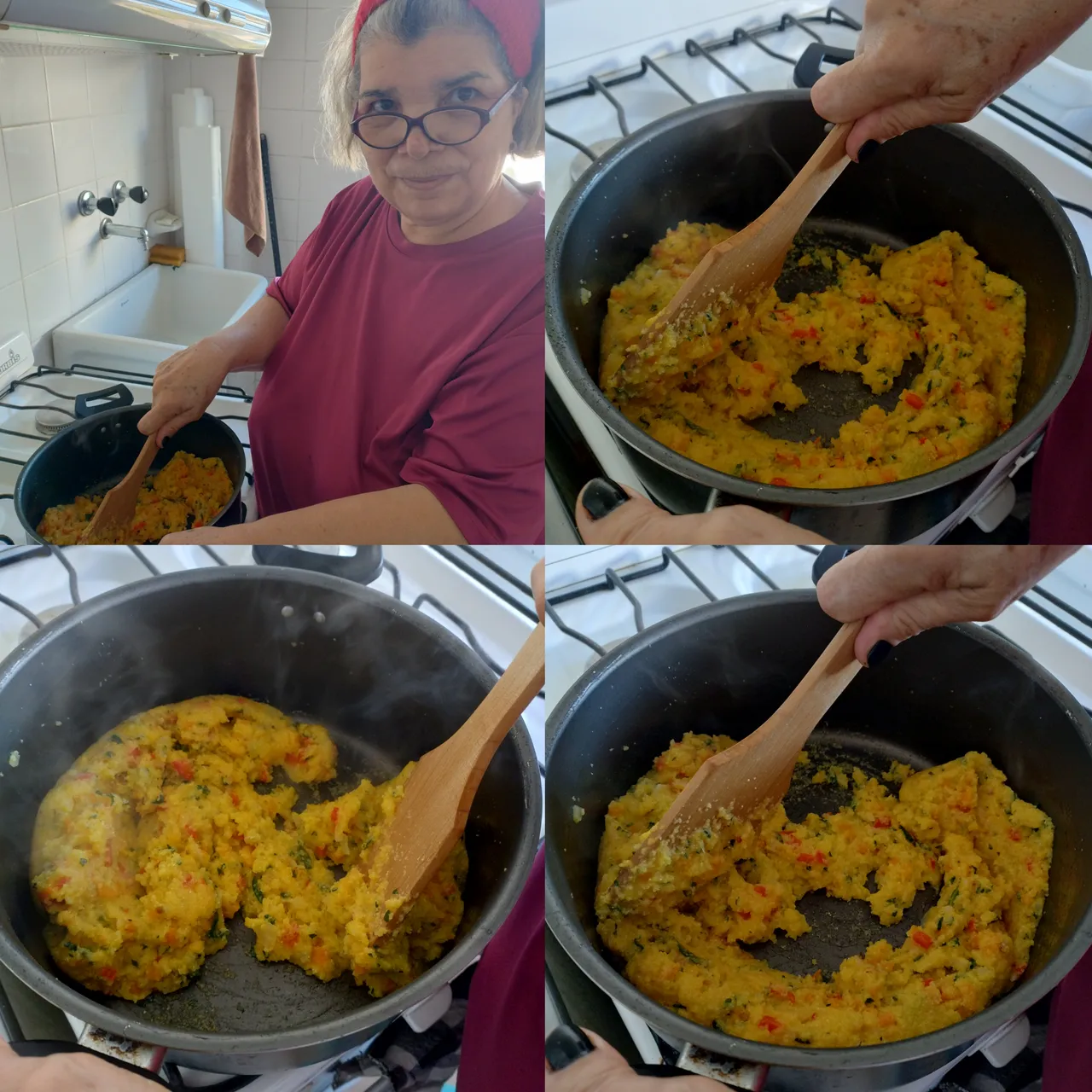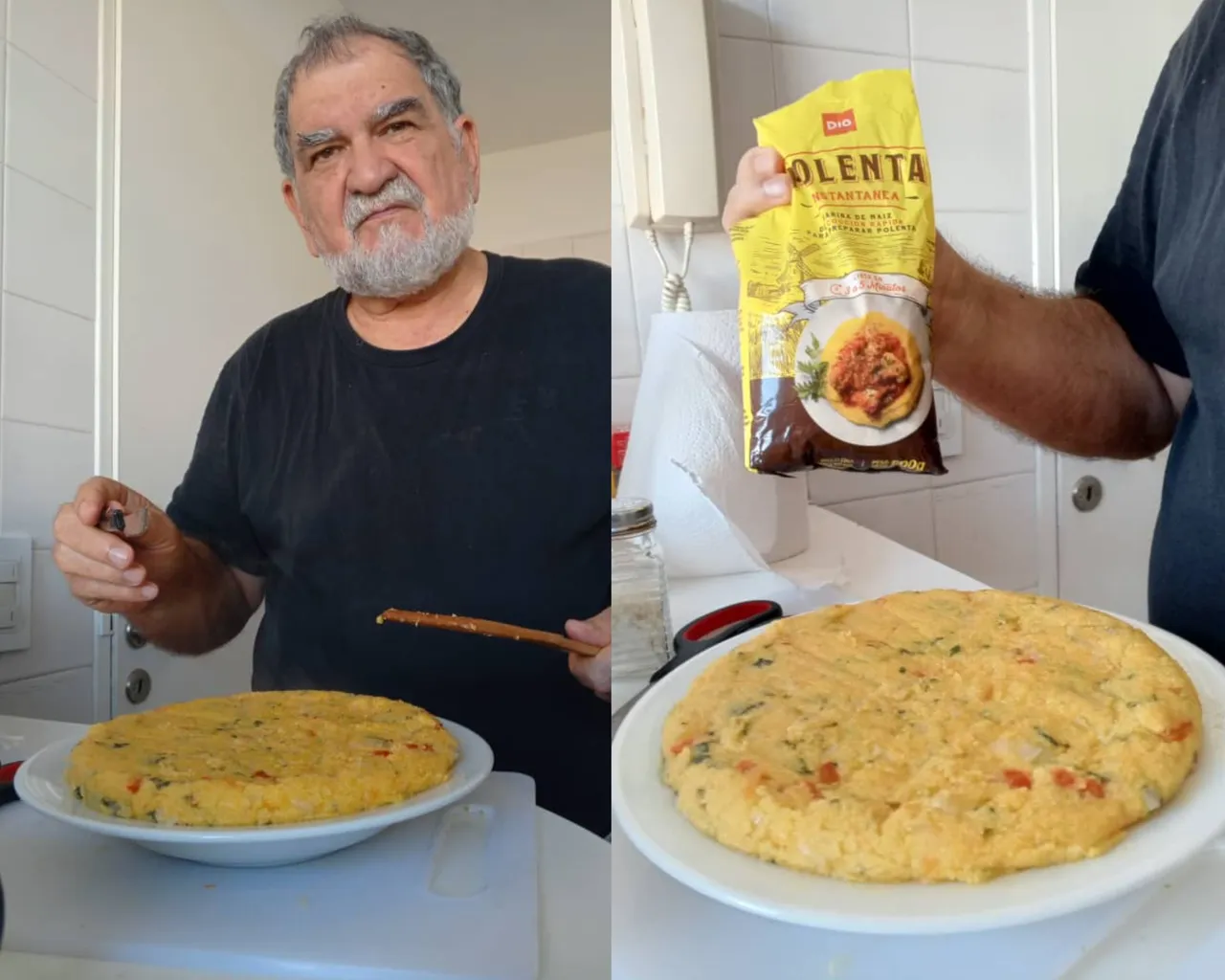
¿Qué preparamos los venezolanos con harina de maiz? Todo el mundo conoce las arepas y las empanadas, pero también conocen las hallacas y los bollos, todas preparaciones típicas, pero ¿conocen el funche?
El funche, aunque les suene extraño el nombre, es una versión de polenta, que preparamos los venezolanos. Al menos ese es el nombre que le dan en el oriente del país, de dónde yo soy originaria, no sé si en otras regiones le dan otro nombre.
Se hace con la misma harina de maíz precocida con que se hacen las arepas. Si lo quieres aliñado (que es como me gusta más a mí) en una olla haces un sofrito. Los ingredientes del sofrito son bastante libres dependiendo del gusto de cada quien, puede ser cebolla, ají, ajo, pimentón, cebollín, lo que se te ocurra o tengas a la mano. Y si no lo quieres tan vegetariano le puedes poner trocitos de tocineta, jamón, mortadela, pollo, o cualquier otra cosa.

Una vez listo el sofrito, le pones agua o caldo y sal al gusto. Cuando eso hierva le bajas el fuego al mínimo y vas agregando la harina de maíz poco a poco mientras lo mueves y se va a ir formando una masa. Cuando se despega de las paredes de la olla entonces está listo. Cuidado que si pones mucha harina te puede quedar muy duro después, porque aunque lo sientas un poco blando al principio, toma una textura más firme. Lo extiendes en una bandeja y después de unos minutos se puede cortar como un pastel.

Las proporciones y las medidas van a depender de la harina que usen, pero más o menos para dos tazas de agua es una taza de harina, pero hay que ponerla poco a poco, por si resulta mucha y no se les vaya la mano.
En casa nos gusta hacer el funche aliñado con muchos vegetales, incluida espinacas o acelgas, porque la verdad es que el maíz no tiene un valor nutricional muy alto. Cuando estaba en Venezuela y la harina de maiz que conseguía no era muy buena para hacer arepas (la harina del clap por ejemplo), esta era una grandiosa opción.

Desde que estamos en Buenos Aires usamos harina de polenta para preparar el funche. Es una harina más gruesa que la que se usa para hacer las arepas, pero se obtiene un buen resultado. Lo más importante es que cuesta la cuarta parte de lo que cuesta la harina para hacer las arepas.
Ahora conocen un platillo más y estoy segura de que ustedes pueden ponerse creativos e inventar una versión con sus vegetales o condimentos preferidos.
English version (Google translate)

What do Venezuelans prepare with corn flour? Everyone knows arepas and empanadas, but they also know hallacas and bollos, all the typical preparations, but do you know funche?
Funche, although the name sounds strange, is a version of polenta, which we Venezuelans prepare. At least that is the name they give it in the east of the country, where I am from, I don't know if in other regions they give it another name.
It is made with the same precooked corn flour with which arepas are made. If you want it seasoned (which is how I like it best) in a pot you make a sofrito. The ingredients for the sofrito are quite free depending on each person's taste, it can be onion, chili, garlic, paprika, chives, whatever comes to mind or you have on hand. And if you don't want it so vegetarian you can add pieces of bacon, ham, mortadella, chicken, or anything else.

Once the sofrito is ready, you add water or broth and salt to taste. When it boils, lower the heat to minimum and add the corn flour little by little while you stir it and it will form a dough. When it comes away from the sides of the pot, then it is ready. Be careful, if you put in too much flour it can end up very hard, because even though it feels a little soft at first, it takes on a firmer texture. Spread it out on a tray and after a few minutes you can cut it like a cake.

The proportions and measurements depend on the flour you use, but more or less for two cups of water is one cup of flour, but you have to add it little by little, in case it turns out to be too much and they don't go overboard.
At home we like to make the funche seasoned with lots of vegetables, including spinach or chard, because the truth is that corn doesn't have a very high nutritional value. When I was in Venezuela and the corn flour I could get wasn't very good for making arepas (the flour from clap for example), this was a great option.

Since we've been in Buenos Aires we've been using polenta flour to make funche. It's a coarser flour than the one used to make arepas, but you get a good result. The most important thing is that it costs a quarter of what the flour to make arepas costs.
Now I know one more dish and I'm sure you can get creative and come up with a version with your favorite vegetables or seasonings.

Imágenes de mi propiedad
Images of my property